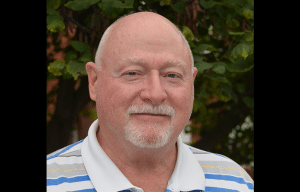Getting help for seasonal affective disorder | For Your Health
For all its holidays and celebrations, winter can be a tough time for many people. The long nights and cold, gray days can knock us off our regular routines and just leave us feeling a bit down. And that’s to be expected from time to time. For some people, though, the changes in mood they experience in winter can be more severe and lasting, pointing to a serious condition called seasonal affective disorder.
Seasonal affective disorder, or SAD, is an illness that is tied to other mood disorders, such a depression and bipolar disorder, and it can significantly impair daily living. As the name implies, it has a clear pattern of coming on and then going away during specific seasons. “The most common form of seasonal affective disorder is major depressive disorder with a major depressive episode in winter,” said Dr. Emily Mukherji, adult psychiatry clinic director at Washington University School of Medicine in St. Louis.
About 1-3 percent of people in the U.S. will at some point experience an episode of seasonal affective disorder. Typical symptoms for the condition most often mimic those for depression, including decreased mood, lack of interest or pleasure in activities, difficulty concentrating or thoughts of suicide. Some symptoms, though, can be more specific to seasonal affective disorder, such as lower energy levels, an increased appetite with carbohydrate cravings and an increased need for sleep.
“It’s almost like a form of hibernation in the winter months,“ Mukherji said.
The good news, though, is that seasonal affective disorder can be treated. So, it’s important to talk to a health-care provider if you’re concerned about how you’re feeling. The worse you feel and the worse your symptoms, the more imperative it is to get help. “Anyone at imminent risk of hurting themselves or others should call 911 and go to an emergency room right away,“ said Mukherji.
Treatment for seasonal affective disorder most often involves a combination of antidepressant medication and light therapy, which is the use of a special lamp that simulates exposure to sunlight. Someone with only mild symptoms may use light therapy on its own, without medication.
Light therapy lamps are available online and at specialty stores and can cost around $30 and up. Some provide continuous bright light that you can sit in front of while reading, eating breakfast or watching your favorite show. Others act more like a natural alarm clock, simulating the light of the rising sun over a 90-minute period or so.
“Most people will use light therapy from mid-October through March and will bring their lamps out every year around the same time to try to prevent a winter depressive episode,” Mukherji said.
When buying a lamp, look for a bright-light lamp that provides around 10,000 lux of brightness or a dawn simulator that provides around 250 lux. Light therapy can have some side effects, like eye strain, insomnia and irritability, so it’s important to follow the recommendations of a health-care provider. In general, bright-light sessions should be kept to mornings and under 90 to 120 minutes a day.
Other steps that can help with seasonal affective disorder include counseling in cognitive behavioral therapy and following certain healthy behaviors, like exercising regularly, getting outside during the day, eating a healthy diet and limiting alcohol.
Whatever season it is, it’s important to look after your physical and mental health. Winter, though, can bring unique health issues. And although it may seem in line with the harshness of the weather, you shouldn’t feel the need to hunker down and endure through an episode of seasonal affective disorder on your own. You can feel better.
“SAD can be significantly impairing but it is a very treatable illness,” Mukherji said. “So please seek out help.”
It’s your health. Take control.
Dr. Graham A. Colditz, associate director of prevention and control at Siteman Cancer Center at Barnes-Jewish Hospital and Washington University School of Medicine in St. Louis, is an internationally recognized leader in cancer prevention. As an epidemiologist and public health expert, he has a long-standing interest in the preventable causes of chronic disease. Colditz has a medical degree from The University of Queensland and a master’s and doctoral degrees in public health from Harvard University’s T.H. Chan School of Public Health.






